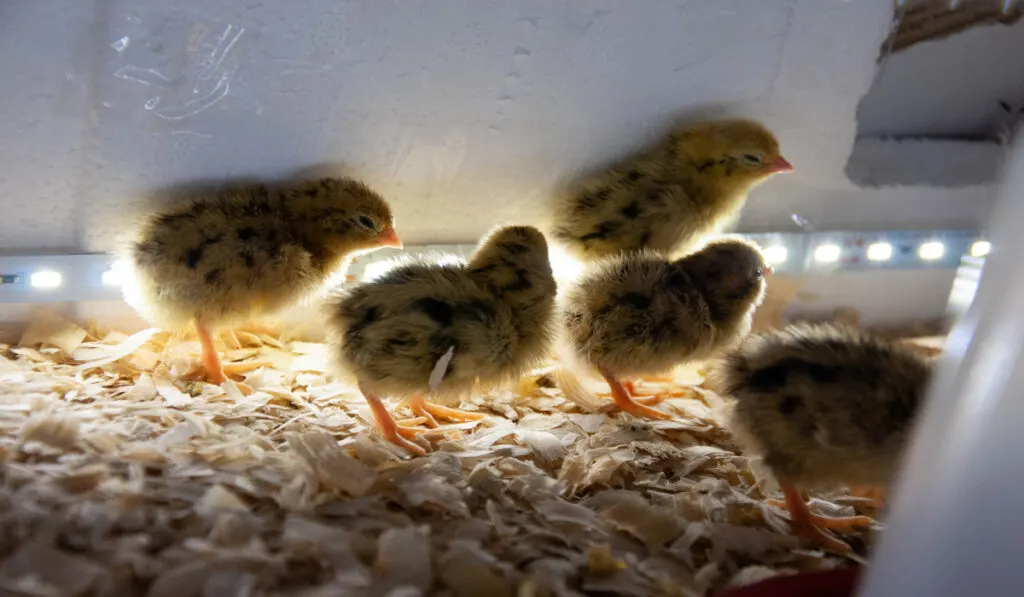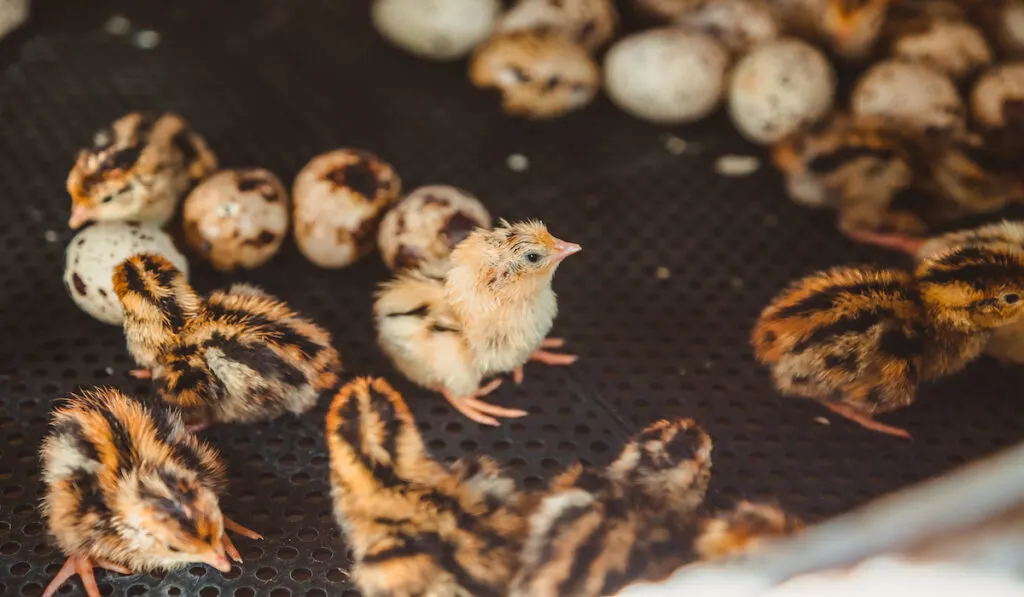Quails have a reputation for being one of the harder birds to raise domestically. While it’s true that they’re more complicated than chickens, quails make an excellent addition to any sort of homestead or larger piece of property, especially if you’ve already got some birds living there.
One of the most important things to take care of before you get baby quails is to figure out what they’re going to eat. They’re notoriously picky eaters, but once you dial in their diet, they’ll do the rest of the work.
What do baby quails eat?
Baby quails in the wild eat grains and seeds that they forage or their mother finds for them.
Baby quails that are raised domestically typically have more choice because they grow up in cornfields, soybean fields, and around other plants where feed is abundant.
They love eating seeds and grains that come in birdseed as well.
If you’re interested in raising baby quails, or you’ve tried your hand at raising them and are having trouble getting them to eat, here is some helpful information about what baby quails eat and how to get them to eat.
Table of Contents
Young Quails in the Wild
Quails are a populous bird in the United States. They’re a common target of bird hunters and can be found in most parts of the country. In the wild, baby quails will eat a ton of seeds and grains, when available.
They’ll also munch on berries, nuts, and insects when they have to take what’s around them. While wild quails love things like sunflower seeds, they are always keeping one eye open to spot an exposed worm or a beetle stuck on its back.
As with most wild animals, baby quail diets will vary to some degree depending on where they live, what the options are, and how the weather affects what’s around.
Baby Quails Raised Domestically
Quails love seeds, but their penchant for bugs also makes them a popular choice for landowners who want to get rid of ticks and other insects on their property. Quails, when full-grown, spend a lot of their days pecking around in the grass and dirt. They’ll hoover up anything that moves that they can easily swallow.
When quails are babies though, their diets need a bit more attention. Baby quails are indeed a lot more fragile than chicks or ducklings. For people who have raised chickens, you may be thinking, “How can that be?” because you may have had some tough experiences with lost chicks.

When it comes to feeding baby quails, you need to know that they need a diet that is higher in protein than non-game birds. Target something around 20-30% protein when you are feeding them. You can find high-protein game bird feed online or in pet supply or agriculture stores in your area.
If you’re buying feed in the store, make sure you tell someone working there that you’re looking for game bird feed suitable for baby quails.
Feeding baby quails with a lot of protein for the first eight weeks or so will improve their chances of survival significantly. Once you get them over that hump, you can relax a little bit because they’ll be out in the yard eating a wider variety of foods.
Remember that baby quails will also need ready access to fresh water that’s refreshed regularly. Baby quails, like other pets, will scramble around their pen a lot when they’re young. They’ll track droppings into the water and drinking too much of it will get them sick. Make sure you change it frequently to keep it clean.
Keeping Your Baby Quails Warm
In addition to getting the feed and water right, there are other things you need to do for your baby quails to keep them happy and healthy. One of the biggest mistakes new owners make is not keeping them warm enough.
These are fragile birds when they’re young, and they’ll die quickly if they’re too cold. If you’re somewhere where it gets chilly, get a heat lamp and put them somewhere they can stay warm. Target around 95 degrees inside to maintain their body heat. That’s pretty hot for humans, especially at night, so a lot of owners keep them in the garage or somewhere like a barn or a shed.
One way you can tell if they are too cold or too hot is where they all huddle together in the box or pen that they’re in.
If you see that the quails are all in the corner opposite the heat lamp, that means they are too hot. If they are fighting to get closer to the lamp, then you may want something a little stronger.

Common Types of Baby Quails
Most people will go with the common quail breeds because they are affordable and easy to find. For example, a lot of people who raise quails buy baby Bobwhite Quails. These birds are great for egg production, meat, or if you want to hunt quail on your land.
They are great flyers, so not the birds to own if you expect them to stay in the backyard outside of their enclosure.
The Coturnix Quail is another good choice. They’re smaller than Bobwhites and fly less, so perhaps are a good option for folks with less space for the birds to roam around in.
These are about half the size of Bobwhite Quails. They do well in colder weather and produce a good number of eggs as well.
Keeping your baby quails fed with the right feed, with a good, clean water supply, and warm enough will significantly increase your chances of getting through those crucial early weeks of life. Eight weeks will pass in a flash, and soon your quails will be strong enough to be out on their own.
They make a great addition to any farm or property. With a little legwork, you can add some beautiful birds to your family and make years of lasting memories.
